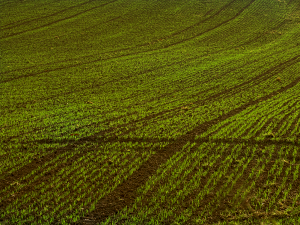 Northwest Region
Northwest Region
Northwest Region Crop Report Prepared by: Manitoba Agriculture
June 4, 2019 |
There was very hot, windy weather through the majority of the region last week with highs close to 30°C. There were some scattered rain
events through the region over the weekend; The Pas received 13 mm, Alonsa 10 mm, Dauphin 25 mm with Pipe Lake and Reedy Creek receiving 13 and 16 mm respectively. These rainfall events were welcome where soil moisture is lacking however, other areas are still looking for rain as soil moisture conditions worsen. Around Roblin soil moisture conditions are 50% short and 50% adequate; Swan River area is rated as 10% very short, 50% short and 40% adequate; soil moisture, around Dauphin conditions are drier with 80% of the soils short of moisture and 20% adequate; soil moisture at The Pas is 90% adequate, 10% surplus.
Overall seeding progress throughout the region is at 95% complete with good progress on seeding operations at The Pas. The extent of frost injury from last weekend is varied with some canola fields in the Roblin and Swan River areas being reseeded due to frost damage. Seeding of spring wheat and canola is virtually complete however, the dry soil conditions and hot, windy weather has resulted in patchy emergence across all crops. There are some producers in the Swan River area finishing up on their canola seeding, which in that area is estimated at 95% complete. There are some signs of heat canker with the hot weather. Soybeans are 25% emerged; 80% of the spring wheat is in the seedling stage. Weeds are actively growing and herbicide applications are occurring as the appropriate crop stages is reached.
Diamondback moths are showing up in traps throughout the region but numbers remain low. There are reports of reseeding and spraying canola in Swan River due to flea beetles and cutworms. Around Dauphin/Grandview and Ste. Rose, there are also reports of spraying and re-seeding due to flea beetle feeding.
Hay and pastures are starting to grow slowly with most grass and legumes being less than 8 to 10” high and all desperately needing rain and more heat. Precipitation has been spotty throughout the area. Dugouts are 50% to 75% full. Cattle are out grazing on many pastures, but have to move much more frequently than on an average year.
